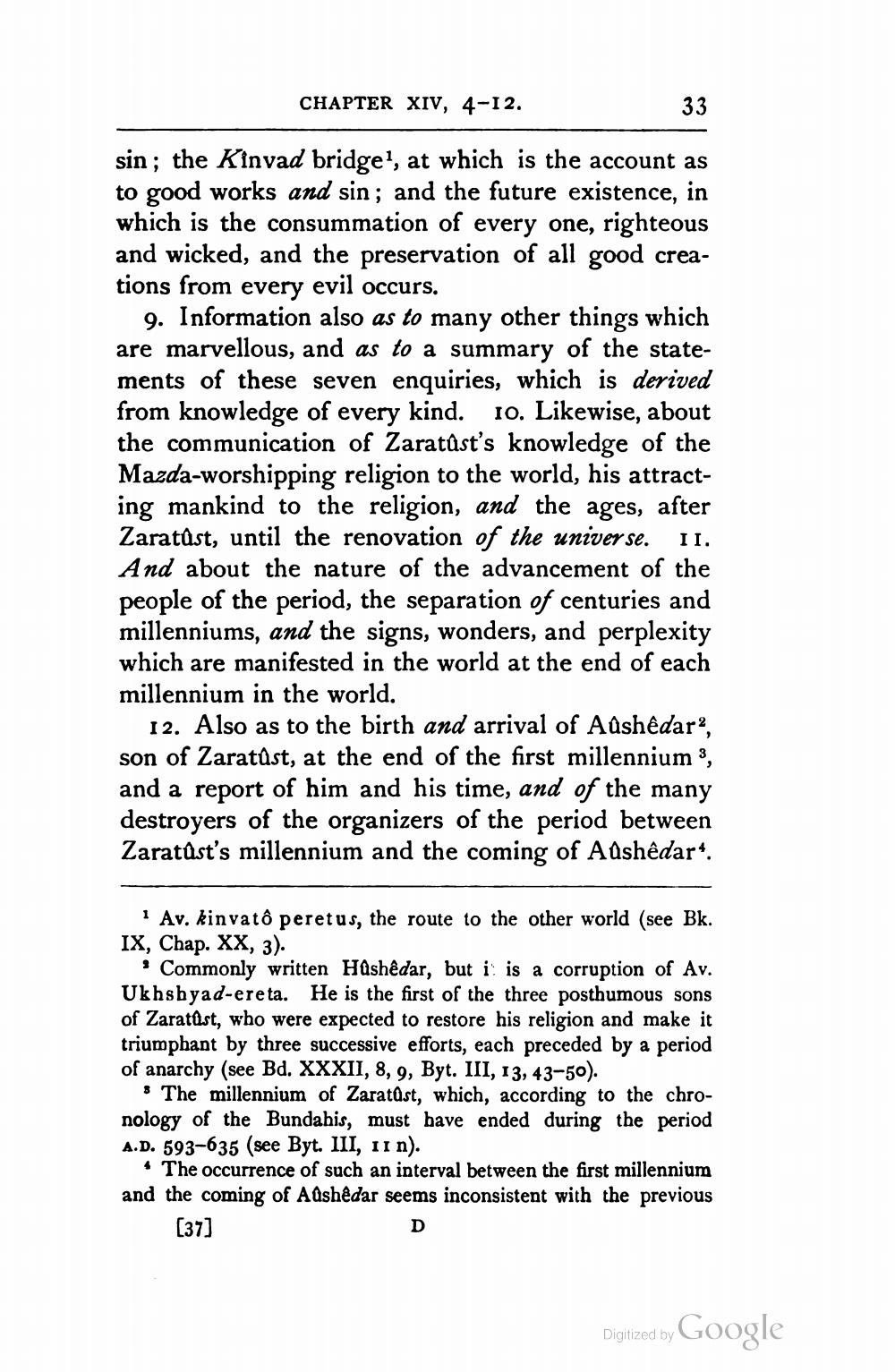________________
CHAPTER XIV, 4-12.
33
sin; the Kinvad bridge1, at which is the account as to good works and sin; and the future existence, in which is the consummation of every one, righteous and wicked, and the preservation of all good creations from every evil occurs.
9. Information also as to many other things which are marvellous, and as to a summary of the statements of these seven enquiries, which is derived from knowledge of every kind. 10. Likewise, about the communication of Zaratust's knowledge of the Mazda-worshipping religion to the world, his attracting mankind to the religion, and the ages, after Zaratust, until the renovation of the universe. And about the nature of the advancement of the people of the period, the separation of centuries and millenniums, and the signs, wonders, and perplexity which are manifested in the world at the end of each millennium in the world.
II.
12. Also as to the birth and arrival of Aûshêdar2, son of Zaratust, at the end of the first millennium 3, and a report of him and his time, and of the many destroyers of the organizers of the period between Zaratust's millennium and the coming of Aûshêdar1.
1 Av. kinvatô peretus, the route to the other world (see Bk. IX, Chap. XX, 3).
' Commonly written Hûshêdar, but it is a corruption of Av. Ukhshyad-ereta. He is the first of the three posthumous sons of Zaratust, who were expected to restore his religion and make it triumphant by three successive efforts, each preceded by a period of anarchy (see Bd. XXXII, 8, 9, Byt. III, 13, 43-50).
The millennium of Zaratust, which, according to the chronology of the Bundahis, must have ended during the period A.D. 593-635 (see Byt. III, 11 n).
• The occurrence of such an interval between the first millennium and the coming of Aûshêdar seems inconsistent with the previous
[37]
D
Digitized by Google




